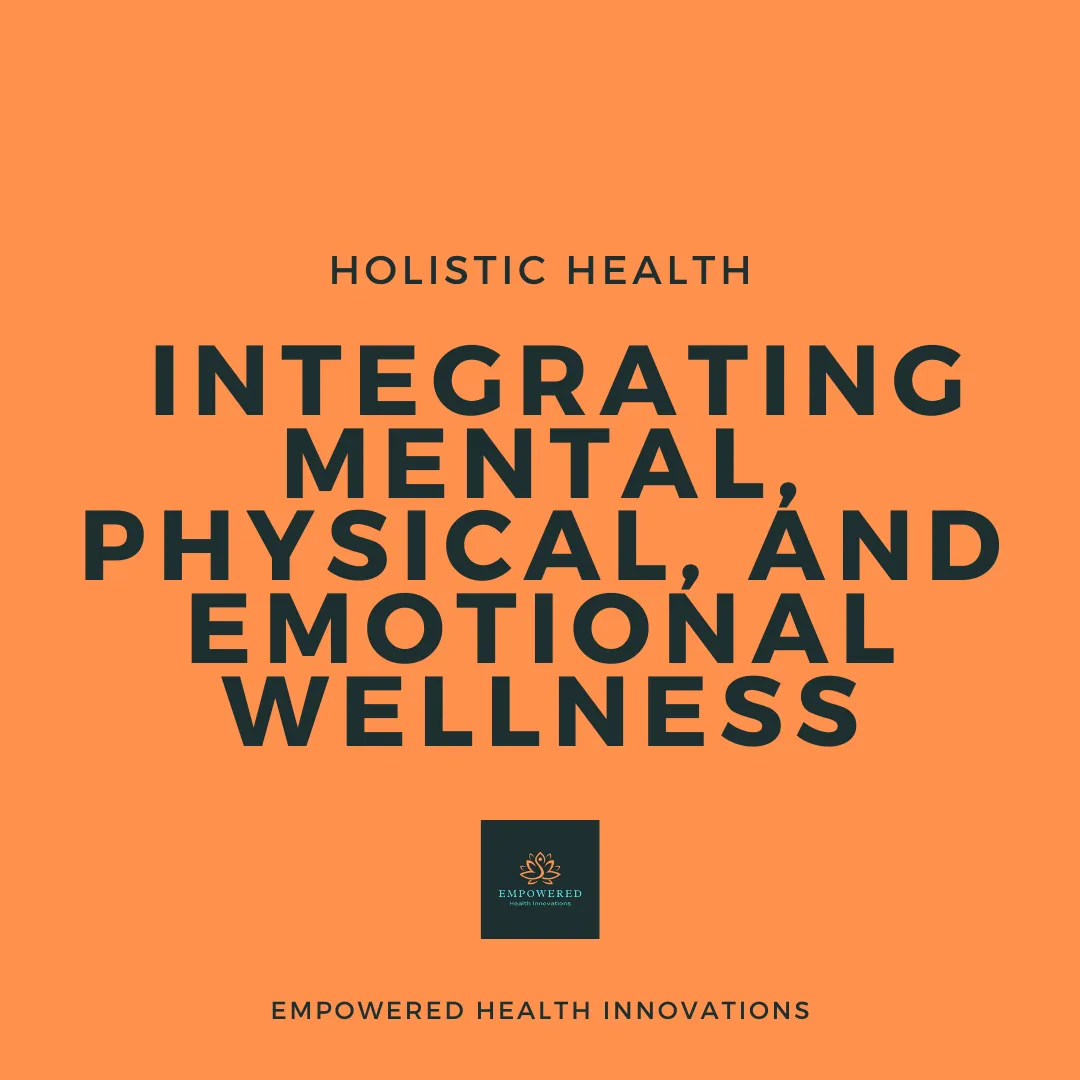
Integrating Mental, Physical, and Emotional Wellness
Integrating Mental, Physical, and Emotional Wellness
Achieving overall wellness requires a holistic approach that integrates mental, physical, and emotional health. Each of these aspects is interconnected, and focusing on one often benefits the others. Here’s how you can integrate these elements to enhance your overall well-being.
Understanding the Interconnection
Mental Wellness: Involves cognitive functions, thought patterns, and mental clarity. Mental health influences decision-making, stress management, and the ability to learn and grow.
Physical Wellness: Encompasses bodily health, fitness, and physical functioning. Physical health affects energy levels, sleep quality, and susceptibility to illness.
Emotional Wellness: Pertains to awareness, understanding, and management of emotions. Emotional health impacts relationships, self-esteem, and overall happiness.
Recognizing the interplay among these dimensions helps in creating a balanced approach to wellness.
Strategies for Integrating Wellness
Mind-Body Practices
Yoga: Combines physical postures, breathing exercises, and meditation to enhance flexibility, strength, and mental clarity.
Tai Chi: A gentle form of martial arts focusing on slow movements and deep breathing, promoting physical health and mental calmness.
Regular Physical Activity
Exercise: Engaging in regular physical activity, such as walking, running, or cycling, releases endorphins, improving mood and reducing anxiety.
Strength Training: Builds muscle and boosts metabolism, which can enhance self-esteem and body image.
Balanced Nutrition
Healthy Diet: Consuming a variety of nutrient-rich foods supports brain function, energy levels, and emotional stability.
Hydration: Adequate water intake is essential for cognitive functions and physical performance.
Quality Sleep
Sleep Hygiene: Establishing a regular sleep schedule and creating a restful environment can improve both mental and physical health.
Relaxation Techniques: Practices such as progressive muscle relaxation or guided imagery can enhance sleep quality.
Stress Management
Mindfulness Meditation: Helps in staying present, reducing stress, and improving emotional regulation.
Breathing Exercises: Techniques like deep breathing or box breathing can quickly reduce stress and calm the mind.
Emotional Awareness
Journaling: Writing about thoughts and feelings can clarify emotions and reduce stress.
Therapy or Counseling: Professional support can provide tools for managing emotions and improving mental health.
Social Connections
Community Involvement: Participating in group activities or volunteering fosters a sense of belonging and support.
Healthy Relationships: Building and maintaining supportive relationships enhances emotional health and reduces stress.
Cognitive Engagement
Lifelong Learning: Engaging in new learning experiences keeps the mind sharp and improves mental wellness.
Mental Exercises: Activities like puzzles, reading, or playing musical instruments stimulate brain function.
Self-Care Practices
Regular Breaks: Taking time to relax and recharge prevents burnout and maintains mental clarity.
Hobbies and Interests: Engaging in enjoyable activities enhances emotional well-being and provides a sense of accomplishment.
Positive Environment
Organized Living Space: A tidy and organized environment reduces stress and enhances focus.
Nature Exposure: Spending time in nature improves mood and reduces mental fatigue.
Implementing an Integrated Wellness Plan
Assessment: Evaluate your current mental, physical, and emotional health to identify areas needing attention.
Goal Setting: Set realistic and achievable wellness goals that encompass all three areas.
Routine Development: Create a daily routine that includes activities supporting mental, physical, and emotional health.
Monitoring Progress: Regularly assess your progress and adjust your plan as needed to stay on track.
Conclusion
Integrating mental, physical, and emotional wellness is essential for achieving overall well-being. By adopting a holistic approach and implementing practices that support each aspect of health, you can create a balanced and fulfilling life. Remember, wellness is a continuous journey, and making small, consistent efforts can lead to significant improvements in your overall quality of life.
4o